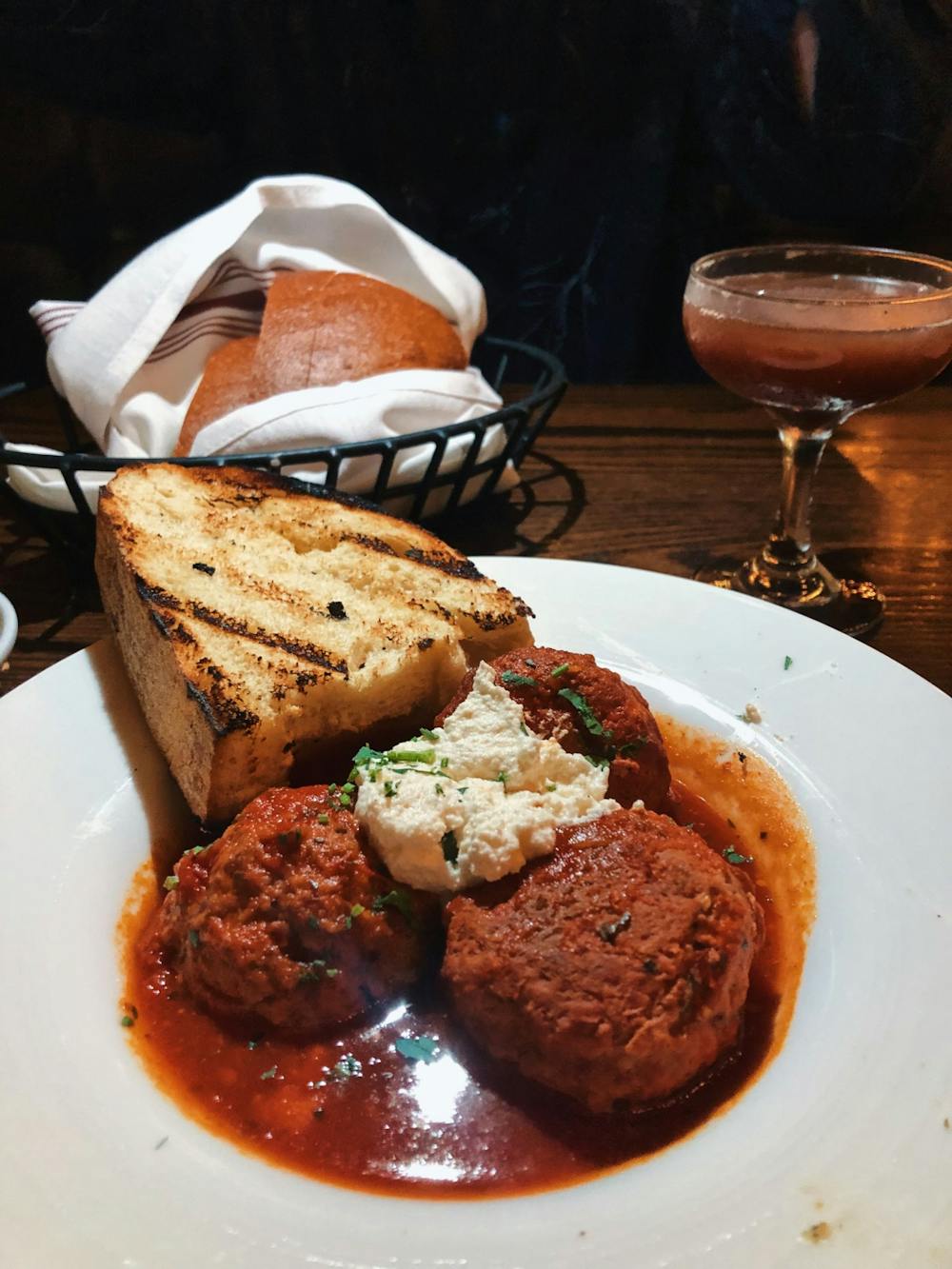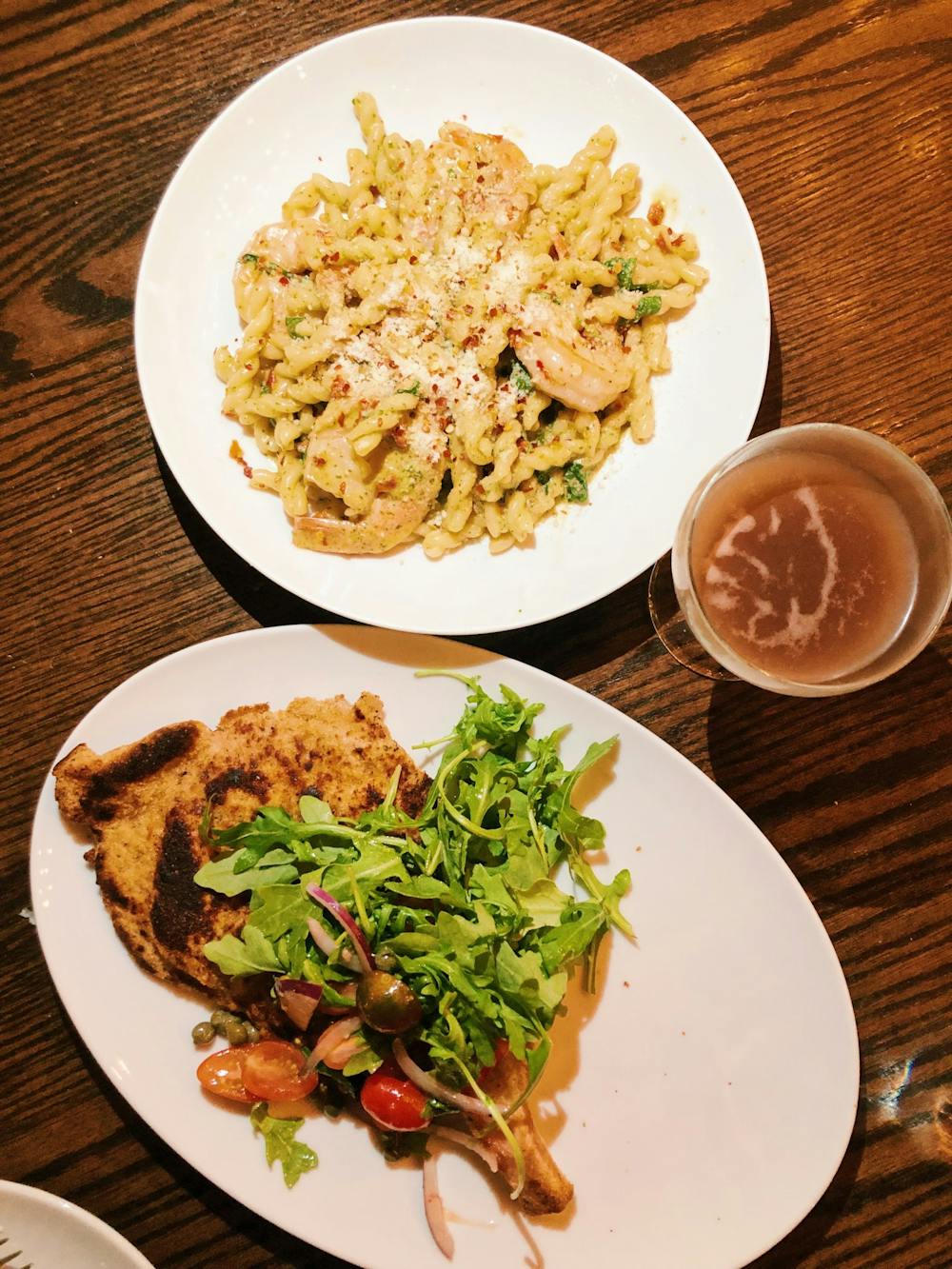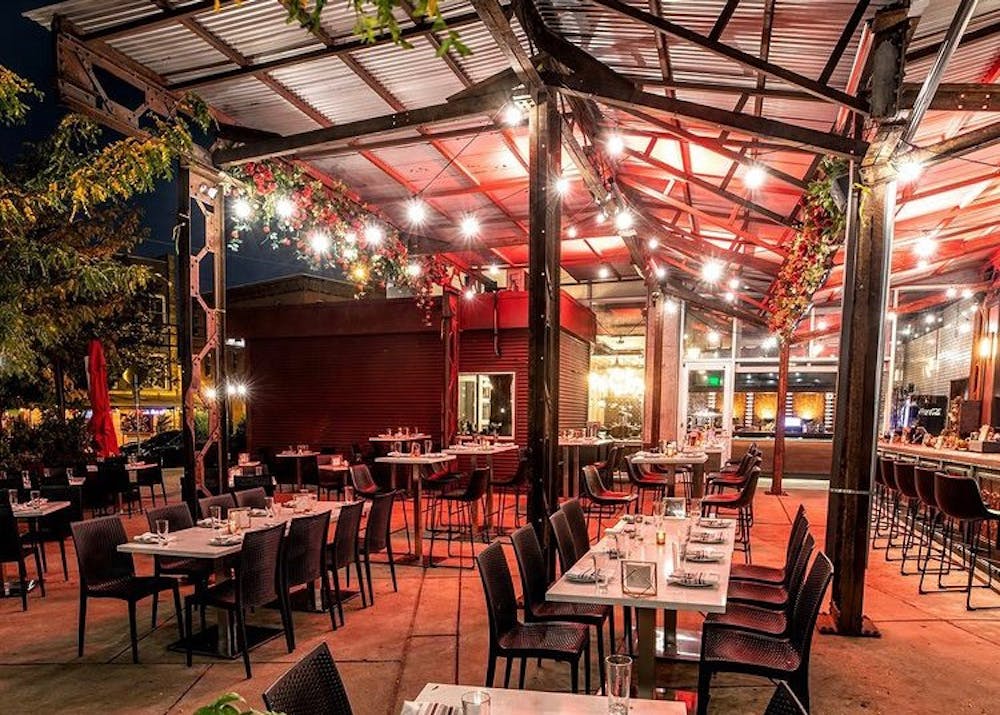Everything I’ve learned about good Italian food comes from guilty pleasure media. There are the tense meals of The Sopranos, where family traumas are framed by oversized plates of gravy, gabagool, and baked zitis, and The Jersey Shore’s famous Sunday dinners, where Mike “The Situation” Sorrentino would hold court over plates of sausage and peppers and chicken parmesan.
For me, Italian cooking has always coalesced into a fuzzy image of big portions, well–seasoned meats, and family–style eating, whatever you take that to mean. The three come together effortlessly at Figo, a catch–all Italian concept located on a crowded segment of North Second Street in Northern Liberties.
Owned by Glu Hospitality, Figo is the growing restaurant group’s latest eatery in a bid to own 40% of NoLibs' restaurant row, per a press release. The front of the space functions like any other Instagram–chic restaurant. It has an open–concept kitchen, industrial fairy lights, and a dreamy patio, while the back end is a no–frills pizzeria serving white clam pies, thick focaccias, and unpretentious hoagies.
When Philadelphia Magazines’s Food Editor Alex Tewfik waxed poetic in our Fall Dining guide about the "revival of the middle class restaurant,” it was easy to imagine he was thinking about Figo. In the best way possible, it’s a city–savvy version of the suburban Italian restaurant. You know, the kind of place where you could pick up a pie after soccer practice or celebrate a birthday—special, but indiscriminately so.

The meal begins with a basket of complimentary bread and olive oil sprinkled with flakes of red pepper, which I’ve been told is correlated with authentic Italian cuisine. Then, the appetizers arrive: small plates of baked meatballs topped with marinara and garlicky ricotta, and a burrata “salad” with arugula, onions, and tomatoes.
Both smack of something an enterprising grandmother would make, the ingredients simple and the flavors delightfully homey. The meatballs have the correct texture—breadcrummy, yet softened by the sauce—with the ricotta balancing out what would otherwise be a dense plate. Meanwhile, the burrata isn’t what you'd expect from social media feeds inundated with VIP List–style money shots. It’s creamy instead of runny, meant to be eaten with the salad instead of on top of it.
Next, the main courses—a shrimp gemelli plated with a pesto cream sauce, sundried tomatoes, and more arugula, as well as the star of the show, the pork milanese (which is just menu–speak for a big ‘ole fried pork chop). Each bite transports me back to my decidedly un–Italian childhood, where I’d watch Lidia Bastianich cook from a fake home kitchen on PBS, transfixed by the delicate way she’d mold pasta dough and season fresh pork shanks. The food is comforting, without the heavy feeling of comfort food.

That’s the thing about Figo: It’s regular Italian cooking, something that often gets lost when white–coat chefs try to elevate ethnic cuisine. The traits that make homestyle meals so captivating—a penchant for leftovers, ingredients you can buy at the grocery store, lots of spice—shouldn’t be diluted for the sake of fine dining. They should be highlighted, since these are the traits that made most of us enjoy eating in the first place.
Case in point: the pork milanese. The meat is succulent, with a medium cook that leaves the pork chewy but not tough. All the flavor rests in the bone marrow, inviting diners to politely suck on the scraps while they wait for the check. It tastes like a Sunday feast.
Ultimately, Figo is classic Italian food designed for the millennial finance couple that craves a home–cooked meal. Each dish is familiar, yet just out of reach, done with enough refinement to justify a night out. Come for a small–scale celebration the first time, but return for dinners that remind you of sitting at your dinner table—wherever that may be.

